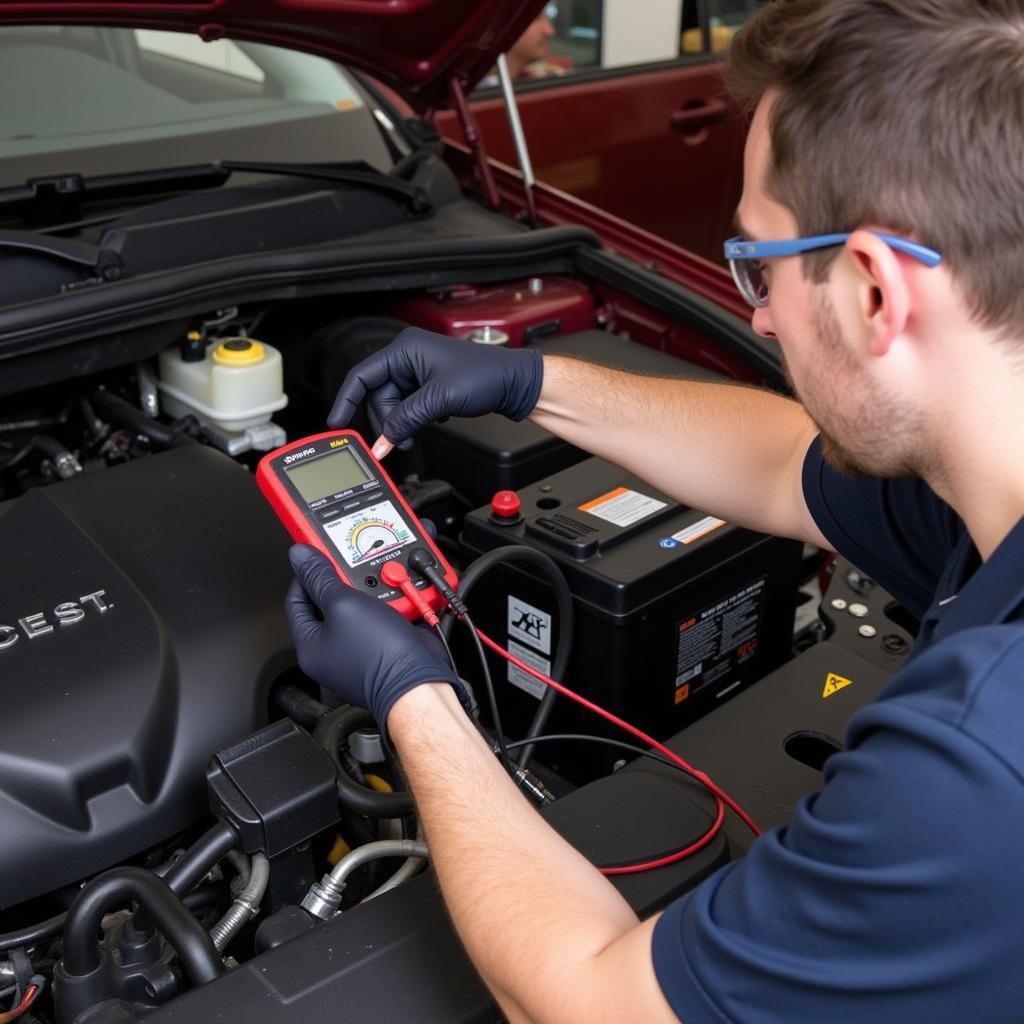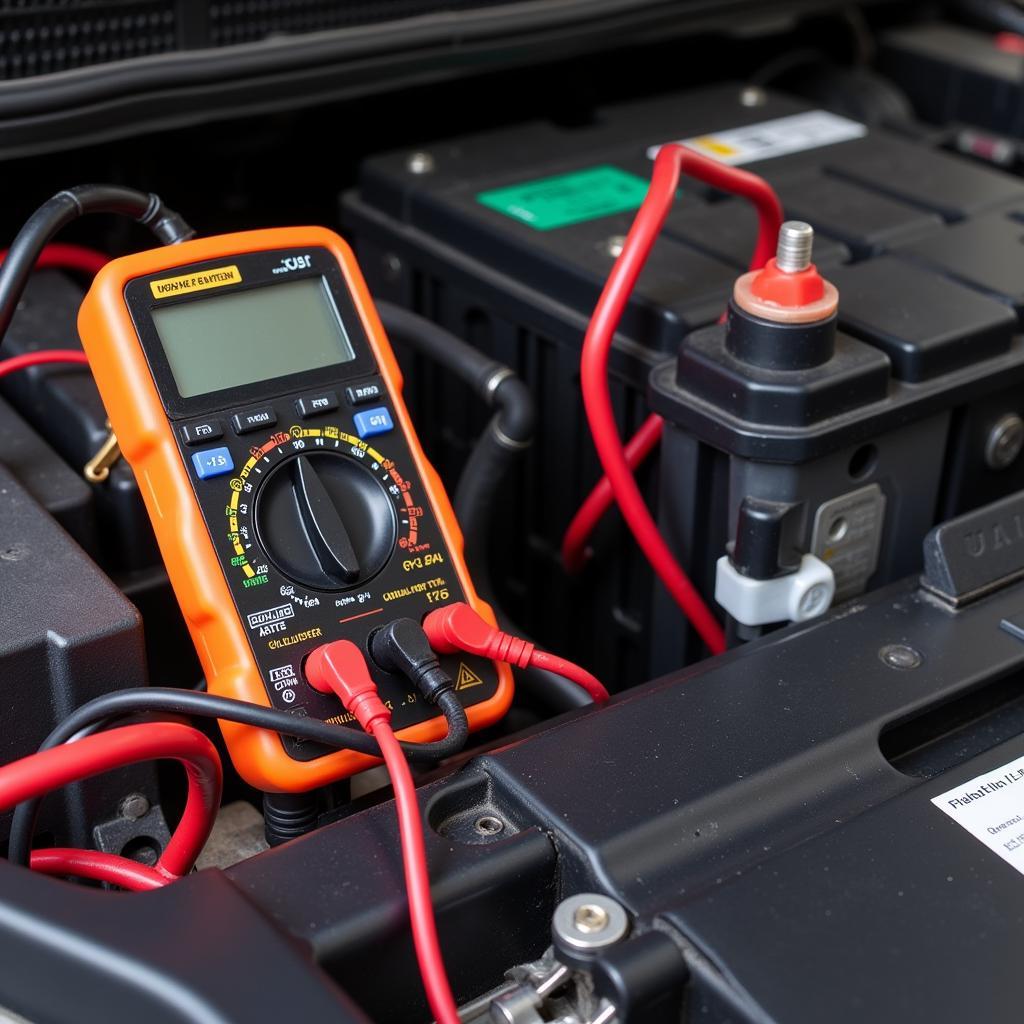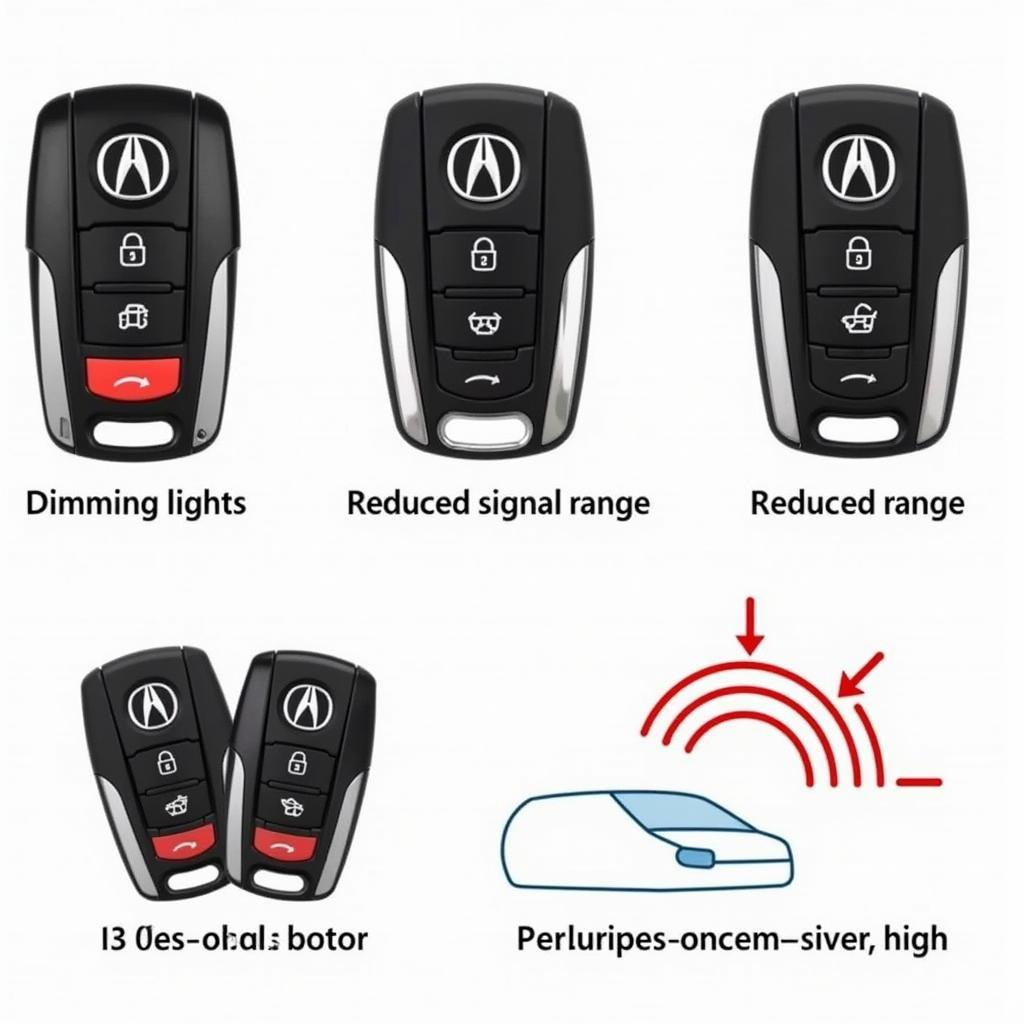Is your car struggling to start? Are your headlights dimming? You might be dealing with a bad battery or a faulty alternator. Knowing the difference between these two crucial components is vital for a quick and accurate diagnosis. This article dives deep into the “alternator vs bad battery” dilemma, providing you with the knowledge to pinpoint the problem and get back on the road.  Testing Car Battery and Alternator
Testing Car Battery and Alternator
Understanding the Roles of the Battery and Alternator
Your car’s electrical system relies on the synergy between the battery and alternator. The battery provides the initial jolt of power to start the engine, while the alternator takes over once the engine is running, recharging the battery and powering all electrical components like headlights, radio, and key fob tester.
Battery Basics: The Power Source
The battery stores electrical energy, acting like a reservoir. Think of it as the starting pitcher in a baseball game—it throws the first pitch (starts the engine), but doesn’t play the whole game. A healthy battery delivers consistent power for starting and provides backup when the alternator fails.
Alternator Action: The Power Generator
Once the engine is running, the alternator becomes the primary power source. It converts mechanical energy from the engine into electrical energy, continuously recharging the battery and powering the vehicle’s electrical systems. The alternator acts like the rest of the baseball team, taking over after the starting pitcher.
Signs of a Bad Battery
A failing battery often exhibits tell-tale signs:
- Slow engine cranking: The engine struggles to turn over, especially in cold weather.
- Dim headlights: Headlights appear noticeably dimmer than usual, especially when idling.
- Clicking sound when starting: A rapid clicking sound indicates the battery doesn’t have enough power to engage the starter motor.
- Interior lights flicker or dim: Interior lights may fluctuate in brightness or dim significantly.
- Battery warning light illuminated: This is a clear indication of a charging system issue, which could be a bad battery or alternator.
Symptoms of a Failing Alternator
A faulty alternator can manifest in several ways:
- Dim or flickering headlights: Headlights may flicker or dim while driving, indicating inconsistent power supply.
- Battery warning light illuminated: Just like with a bad battery, this warning light can indicate a failing alternator.
- Electrical accessories malfunctioning: Problems with the radio, power windows, or other electrical components can be signs of a failing alternator.
- Dead battery: A completely dead battery can be a consequence of a failing alternator that hasn’t been recharging it.
- Whining or growling noise from the engine compartment: A failing alternator can produce unusual noises.
Diagnostic Tests: Identifying the Culprit
To pinpoint whether you have a bad battery or a faulty alternator, consider these tests:
- The Jump Start Test: If the car starts with a jump but dies shortly after removing the jumper cables, the alternator is likely the issue, unable to sustain the charge.
- The Voltage Test: Use a multimeter to check the battery voltage. A healthy battery should read around 12.6 volts with the engine off and around 14.2-14.7 volts with the engine running. A lower voltage reading while the engine is running points towards a faulty alternator.
 Testing a Car Battery with a Multimeter
Testing a Car Battery with a Multimeter
“A simple voltage test can save you time and money. It’s the first step in diagnosing any charging system problem,” says John Smith, ASE Certified Master Technician.
Preventing Future Issues
Regular maintenance can prevent both battery and alternator problems. Have your battery tested annually and inspect the alternator belt for wear and tear.
“Don’t wait until you’re stranded on the side of the road. Preventive maintenance is key to a healthy electrical system,” advises Jane Doe, Lead Automotive Instructor.
Conclusion: Alternator vs Bad Battery – Solved
Identifying the difference between a bad battery and a faulty alternator is crucial for effective car maintenance. By understanding the symptoms and performing simple diagnostic tests, you can quickly diagnose the problem and get your car back in working order. Remember, regular checks and maintenance are the best ways to avoid these issues in the future. Don’t let a bad battery or a failing alternator leave you stranded; take control of your vehicle’s health today. Does your car have an anti-theft device? Find out about does 2019 wrangler sahara have anti theft device and does 2019 wrangler have anti theft device.
FAQ
- How long does a car battery typically last? Three to five years on average, but various factors like climate and driving habits can influence lifespan.
- Can a bad alternator damage a battery? Yes, a failing alternator can overcharge or undercharge a battery, shortening its lifespan.
- How much does it cost to replace an alternator? The cost varies depending on the make and model of your car, but typically ranges from $300 to $700.
- How much does it cost to replace a car battery? Car battery replacement costs between $100 and $300.
- Can I drive with a bad alternator? You can drive for a short distance, but as the battery depletes, the car will eventually stall.
- Can I jump start a car with a bad alternator? Yes, but the car will die again shortly after removing the jumper cables as the alternator can’t recharge the battery.
- What is the difference between a starter and an alternator? The starter initiates the engine, while the alternator powers the electrical system and recharges the battery once the engine is running.



